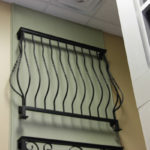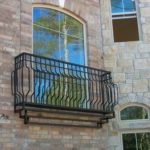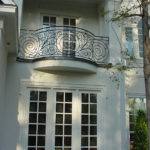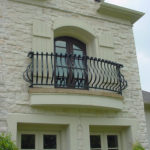Juliet Balconies, growing in popularity
More and more home builders are using the Juliet balcony as a prominent architectural feature on their multistory homes. They can vary greatly in style, often using balcony balusters, a mix of standard balusters to form a simple pattern or a fully fabricated custom scroll design.
A ‘Juliet balcony’ does not protrude out of the building. It is usually part of an upper floor, with a balustrade only at the front, like a small Loggia. Modern Juliet balconies often involve a metal barrier placed in front of a high window which can be opened.
Juliet balconies are named after Shakespeare’s Juliet, who, in traditional stagings of the play Romeo and Juliet, is courted by Romeo while she is on her balcony — though in fact the play itself, as written, makes no mention of a balcony, but only of a window at which Juliet appears. Various types of balcony have been used in depicting this famous scene; however the ‘balcony of Juliet’ at Villa Capuleti in Verona is not in fact a ‘Juliet balcony’, as it does indeed protrude from the wall of the villa (see photograph below). Wikipedia
Raw forged iron balcony balusters

[fusion_builder_container hundred_percent=”yes” overflow=”visible”][fusion_builder_row][fusion_builder_column type=”1_1″ background_position=”left top” background_color=”” border_size=”” border_color=”” border_style=”solid” spacing=”yes” background_image=”” background_repeat=”no-repeat” padding=”” margin_top=”0px” margin_bottom=”0px” class=”” id=”” animation_type=”” animation_speed=”0.3″ animation_direction=”left” hide_on_mobile=”no” center_content=”no” min_height=”none”]
[/fusion_builder_column][/fusion_builder_row][/fusion_builder_container]











